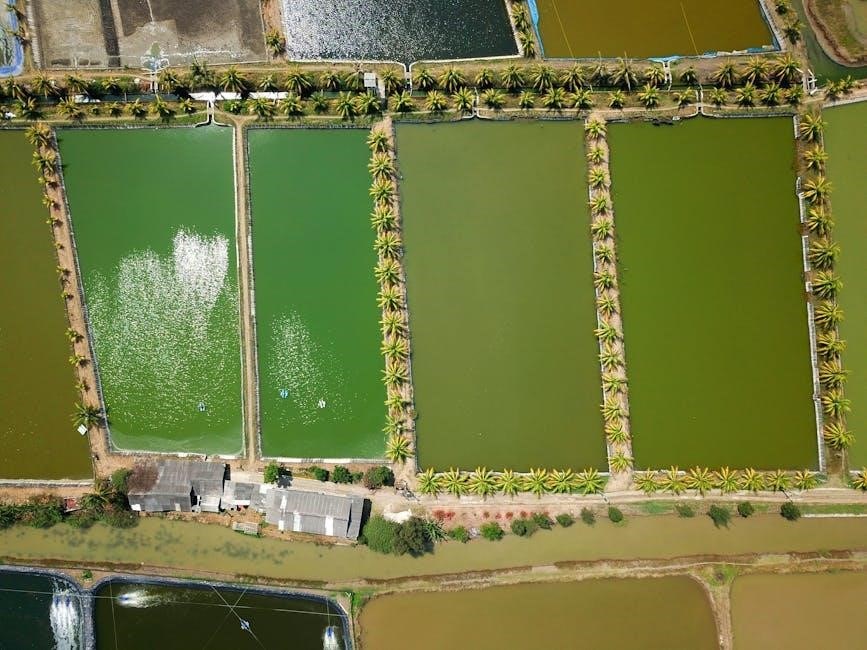
fisheries pdf
Fisheries management involves regulating fishing activities,
managing
fish populations, and protecting marine ecosystems, ensuring sustainable fishing practices and healthy fish stocks for future generations naturally always exist online.
Definition and Components of Fisheries Management
Fisheries management is defined as the process of regulating fishing activities to ensure sustainable fishing practices and healthy fish stocks. The components of fisheries management include
- regulation of fishing gear and methods
- setting of catch limits and quotas
- establishment of marine protected areas
- monitoring and enforcement of fishing activities
these components work together to achieve the goals of fisheries management. Fisheries management involves a range of stakeholders, including fishermen, scientists, and policymakers, who work together to develop and implement management plans. Effective fisheries management requires a thorough understanding of the complex interactions between fish populations, their habitats, and the fishing industry. By considering these factors, fisheries managers can develop management strategies that balance the needs of the fishing industry with the need to conserve fish stocks and protect the marine environment, which is essential for long-term sustainability.
Importance of Effective Fisheries Management
Effective fisheries management is crucial for maintaining healthy fish stocks and ensuring the long-term sustainability of the fishing industry. It helps to prevent overfishing, protect marine ecosystems, and maintain the economic viability of fishing communities. A well-managed fishery can provide a range of benefits, including
- increased food security
- improved livelihoods for fishermen
- enhanced biodiversity
effective fisheries management also helps to mitigate the impacts of climate change, pollution, and other human activities on marine ecosystems. By adopting a precautionary approach to fisheries management, policymakers and managers can help to ensure that fish stocks are harvested sustainably, and that the marine environment is protected for future generations, which is essential for maintaining the health of our planet and its resources, and for supporting human well-being and economic development always online.

Fisheries Management Regime
Fisheries management regime involves regulatory frameworks and institutional
arrangements
governing fishing activities and conservation of marine resources naturally always exist online every day.
Components of the Fisheries Management Regime
The components of the fisheries management regime include a fisheries management system, monitoring control and surveillance, and a fisheries judicial system. These components work together to form a comprehensive framework for managing fisheries resources. The fisheries management system provides the overall direction and guidance for fisheries management, while monitoring control and surveillance ensure that fishing activities are conducted in a sustainable and responsible manner. The fisheries judicial system provides a mechanism for enforcing fisheries laws and regulations, and for resolving disputes related to fisheries management. The effectiveness of the fisheries management regime depends on the ability of these components to work together seamlessly, and to adapt to changing circumstances and new challenges. Effective communication and coordination among the different components are essential for achieving the goals of the fisheries management regime. This requires a high degree of cooperation and collaboration among stakeholders.
Role of Monitoring Control and Surveillance
Monitoring control and surveillance play a crucial role in ensuring the effectiveness of fisheries management. This involves collecting and analyzing data on fish populations, fishing activities, and the impact of fishing on the marine ecosystem. The data is used to inform management decisions, such as setting catch limits and closing fisheries. Monitoring control and surveillance also help to prevent illegal, unreported, and unregulated fishing activities. This is achieved through the use of technologies such as vessel monitoring systems and satellite imaging. Effective monitoring control and surveillance require significant resources and investment, but they are essential for maintaining the health of fish stocks and the marine ecosystem. By providing accurate and timely information, monitoring control and surveillance help to ensure that fisheries are managed in a sustainable and responsible manner, which is essential for the long-term health of the marine ecosystem and the fisheries industry.

Measuring Fisheries Management Effectiveness
Measuring effectiveness involves assessing management outcomes, using indicators and metrics to evaluate progress, and identifying areas for improvement naturally online always.
Initiatives for Measuring Effectiveness
Several initiatives have been developed to measure fisheries management effectiveness, including the Fisheries Management Effectiveness component of the Ocean Health Index and the Fisheries Management Index. These initiatives provide a framework for evaluating management outcomes and identifying areas for improvement. The use of indicators and metrics is crucial in assessing effectiveness, and various tools and methods have been developed to support this process; Online resources and publications, such as fisheries pdf documents, provide valuable information on these initiatives and their applications. By using these resources, fisheries managers and stakeholders can gain a better understanding of the effectiveness of their management practices and make informed decisions to improve them. Effective measurement of fisheries management is essential for ensuring the long-term sustainability of fish stocks and the health of marine ecosystems.
Commonalities and Differences in Effectiveness Initiatives
Effectiveness initiatives in fisheries management share commonalities, such as the use of indicators and metrics to assess management outcomes. However, differences also exist, including variations in methodology and scope. Some initiatives focus on specific aspects of fisheries management, while others take a more holistic approach. The Fisheries Management Effectiveness component of the Ocean Health Index and the Fisheries Management Index are examples of initiatives with different approaches. Online resources, including fisheries pdf documents, provide information on these initiatives, allowing for comparisons and analyses of their strengths and weaknesses. By examining commonalities and differences, fisheries managers and stakeholders can identify best practices and develop more effective management strategies. This information can be used to improve the overall effectiveness of fisheries management, ultimately contributing to the long-term sustainability of fish stocks and marine ecosystems, as discussed in various online publications.

Management Objectives and Indicators
Objectives and indicators are essential components of fisheries management, guiding decision-making and evaluating performance, using fisheries pdf resources and online data naturally always exist online every day.
Setting Clear Objectives for Fisheries Management
Setting clear objectives is crucial for effective fisheries management, as it provides a direction for management actions and enables evaluation of progress, using fisheries pdf resources and online data.
Objectives should be specific, measurable, achievable, relevant, and time-bound, and should be based on the best available scientific information and stakeholder input.
A clear understanding of the objectives is essential for developing effective management strategies and for evaluating the success of management actions.
The use of fisheries pdf and other online resources can facilitate the development of clear objectives by providing access to relevant information and data.
By setting clear objectives, fisheries managers can ensure that management actions are focused and effective, and that the long-term sustainability of fish stocks is maintained, which is essential for the health of the marine ecosystem and the livelihoods of people dependent on fisheries.
Reference Points for Management Objectives
Reference points are critical for establishing management objectives, providing a framework for evaluating the status of fish stocks and the effectiveness of management actions, as outlined in fisheries pdf documents.
These points serve as benchmarks for management decisions, helping to determine when stocks are overfished or when fishing mortality rates are too high.
Reference points can be based on biological, economic, or social factors, and are often used in conjunction with other management tools, such as catch limits and closed areas.
The use of reference points allows fisheries managers to make informed decisions and to adjust management strategies as needed, which is essential for maintaining the long-term sustainability of fish stocks and the health of the marine ecosystem, as discussed in online resources and fisheries pdf materials, providing a foundation for effective management and conservation of marine resources.

Evolution of Fisheries Management
Fisheries management has evolved significantly over time, with new approaches and technologies being developed and implemented, as seen in various fisheries pdf documents and online resources naturally.
Historical Developments in Fisheries Management
The history of fisheries management dates back to the early 20th century, with the establishment of the first fisheries management organizations. Over time, new approaches and technologies have been developed and implemented, as seen in various
fisheries pdf
documents and online resources. The development of fisheries management has been shaped by a range of factors, including changes in fishing technologies, shifts in consumer demand, and advances in scientific understanding of fish populations and ecosystems. Key milestones in the history of fisheries management include the passage of the
Sustainable Fisheries Act
and the development of ecosystem-based fisheries management. These developments have helped to shape the modern approach to fisheries management, which emphasizes the importance of sustainability, conservation, and effective management of fish populations and ecosystems. This approach is reflected in many fisheries pdf documents and online resources.